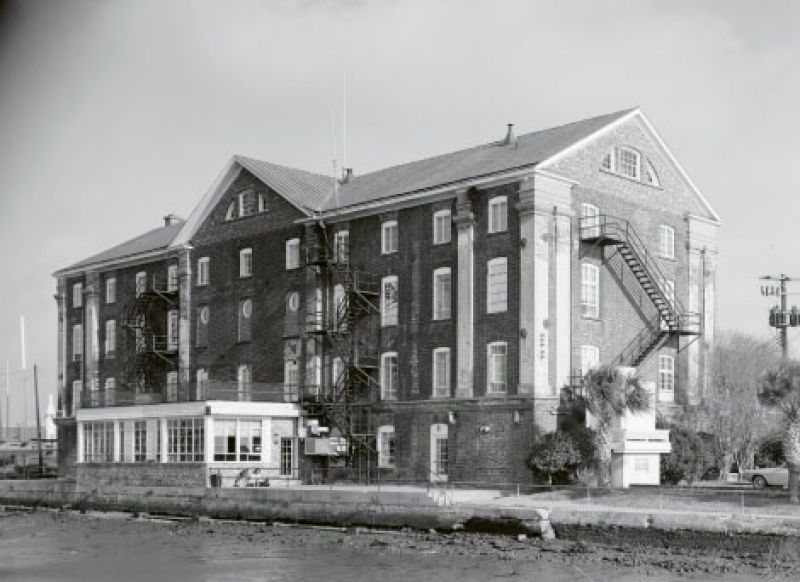
Since our state’s founding, we’ve relied on water to float the local economy. Colonial merchants transported cotton, indigo, and other crops along inland waterways. Tides made the growth of rice possible. Later, rice mills along the Cooper and Ashley ran on steam, stoking the engine of prosperity until the early 20th century. And again during the depression of the 1930s, another idea flowed with the promise of lifting us from economic doldrums: seaplanes, then considered the best vehicles for intercontinental transport.
In September 1936, Pan American Airways announced Charleston as the western terminus for its transatlantic seaplane service, carrying both mail and passengers. Previously, when rough conditions prevented Pan Am flights from touching down in Baltimore or New York, pilots adjusted course to fly here, landing on Lake Murray instead. And the potential of the West Point Rice Mill—today part of the City Marina Complex on Lockwood Boulevard—sweetened the deal.
A remodel of the old building adapted its central portion as a lobby and ticket office with baggage rooms; created a bright lounge with a Palladian window; and converted the south end of the building into offices for customs, health, and immigration services. The cost for renovations, grading, and the use of dredge material from the municipal yacht basin was budgeted at about $300,000. With much funding coming from the federal Works Progress Administration, the project put as many as 1,000 people to work. The “economic importance of this international airport to South Carolina is inestimable,” cooed the local press.
But that was just the beginning. The global nature of the terminal was expected to put Charleston back on the world stage, boost industry and tourism, and create permanent jobs. The city’s favorable year-round weather also prompted interest from carriers in England, France, and Germany. Pan Am had purchased six Boeing 314s costing $550,000 each to expand its fleet, and the infrastructure was in place. Charleston simply had to wait for the seaplanes to arrive on the Ashley River.
But they never came. The beginning of World War II halted much of the service; by 1942, the municipal yacht basin and landing area were taken over by the United States Navy. And dreams of seaplanes and the international prestige they would bring came to a watery end.